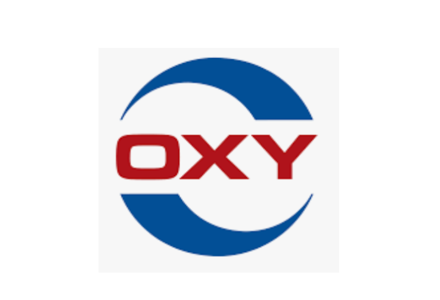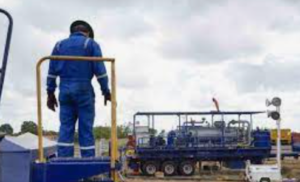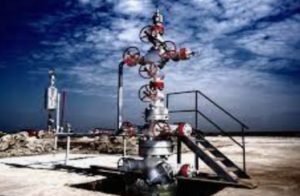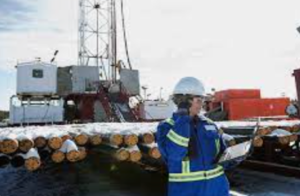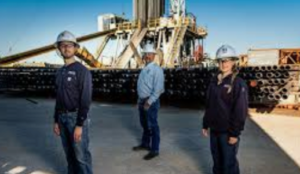When Vicki Hollub became the CEO of Occidental Petroleum nearly a decade ago, she made history as the first woman to lead a major U.S. oil and gas company. But her story isn’t just about breaking barriers—it’s about reshaping an industry at a time of global uncertainty, technological transformation, and mounting energy demand.
US Oil & Gas Operator Account Directory – $10
Includes: Account Name, Location, Phone, Website, Wells Drilled….
From Alabama to the Oil Patch
Born in Bessemer, Alabama, to a carpenter father and a Sears salesperson mother, Hollub’s early life was grounded in discipline, perseverance, and a love for learning. Though she originally pursued music at the University of Alabama, her career path shifted after visiting a drilling rig—an experience that sparked a passion for engineering and led her into the oilfield.
Hollub’s career with Occidental began after a brief stint at City Services, which was later acquired by Oxy. Over the next three decades, she would take on challenging assignments in Venezuela, Ecuador, and Siberia—roles that built her operational grit and leadership acumen long before she stepped into the C-suite.
Transforming Occidental in a Time of Change
Since taking the reins in 2016, Hollub has led Occidental through one of its most pivotal transitions. One of her boldest moves was the acquisition of Anadarko Petroleum for $59 billion—outbidding Chevron and reshaping Oxy’s asset base. The deal faced skepticism, but Hollub stood by it, citing deep knowledge of Anadarko’s subsurface potential and billions in synergies.
Today, Occidental’s transformation is undeniable:
- Domestic oil production grew from 650,000 barrels per day (bpd) in 2015 to over 1.4 million bpd in 2024, according to company filings.
- 84% of Occidental’s output is now from U.S. operations, reducing geopolitical risk.
- The company holds over 1 million net acres in the Permian Basin, the most productive shale play in North America.
Occidental’s progress reflects a broader trend: U.S. crude oil production hit 13.2 million bpd in 2024, according to the U.S. Energy Information Administration (EIA), and is projected to reach 13.5 million bpd in 2025, making the U.S. the world’s top oil producer.
Leading Through Innovation and Carbon Challenges
Hollub’s leadership also reflects a keen awareness of climate concerns and the evolving energy mix. She acknowledges that climate change is real and that CO₂ emissions must be reduced—even while hydrocarbons remain essential to the global economy.
Occidental is not only an oil producer; it’s a technology innovator:
- It leads the industry in CO₂-enhanced oil recovery (EOR), a process that can double recovery rates in certain fields and add up to 50–70 billion additional barrels of domestic oil supply.
- The company is investing in direct air capture (DAC) with its first plant under construction in Texas, expected to capture up to 500,000 tons of CO₂ per year, scalable to 1 million tons.
- Oxy holds a 40% stake in Net Power, which is developing zero-emission natural gas power plants that generate electricity while capturing CO₂ at the source.
These moves align with a global shift toward low-carbon oil production. According to BloombergNEF, carbon capture projects could eliminate over 4 gigatons of CO₂ annually by 2050, but require rapid scale-up and public-private investment.
The Energy Reality: Demand Isn’t Declining
Despite headlines around peak oil demand, global consumption remains strong:
- Global oil demand reached 103.5 million bpd in Q2 2025 and is forecast to rise to 104.7 million bpd by 2026, per the International Energy Agency (IEA).
- Meanwhile, global upstream investment in oil and gas is expected to top $570 billion in 2025, up 7% from the previous year (Rystad Energy).
Even as EV adoption increases, liquid fuels remain irreplaceable for aviation, maritime, and long-haul trucking. Renewables are growing rapidly, but they account for just 13% of global energy consumption as of 2024. In the U.S., solar and wind together provided only about 6% of total energy consumption (EIA), and cannot yet meet the baseload demand of a modern economy.
Energy Independence and Strategic Value
Hollub is clear: energy independence is not just about supply, but about strategic leverage. The U.S. still imports 2.5 to 3 million barrels of heavy crude per day, due to legacy refinery configurations built before the shale boom. While the U.S. is a net exporter of petroleum products, it remains entangled in global energy markets.
That’s why investments in domestic production, refinery upgrades, and advanced recovery technologies are critical to national security—and to maintaining price stability amid geopolitical shocks like those in the Middle East.
Final Thoughts
Vicki Hollub’s story is one of resilience, reinvention, and realism. She’s led Occidental through transformational change, not by chasing headlines but by staying grounded in operational excellence and long-term strategy.
Her belief is simple but profound: hydrocarbons still matter—and the companies that produce them responsibly and innovatively will shape the energy future. With investments in low-carbon solutions like DAC, lithium extraction, and carbon-free power, Occidental is positioning itself as more than just a fossil fuel player—it’s aiming to become a bridge to the next era of energy.
As global demand climbs, the Permian matures, and the energy transition accelerates, Occidental is betting on technology, optionality, and American ingenuity. And at the helm is a CEO who knows how to drill deep—not just into rock, but into opportunity.

